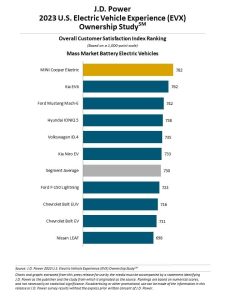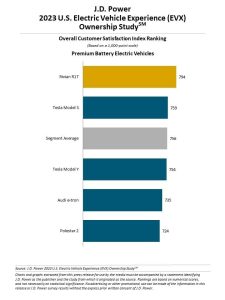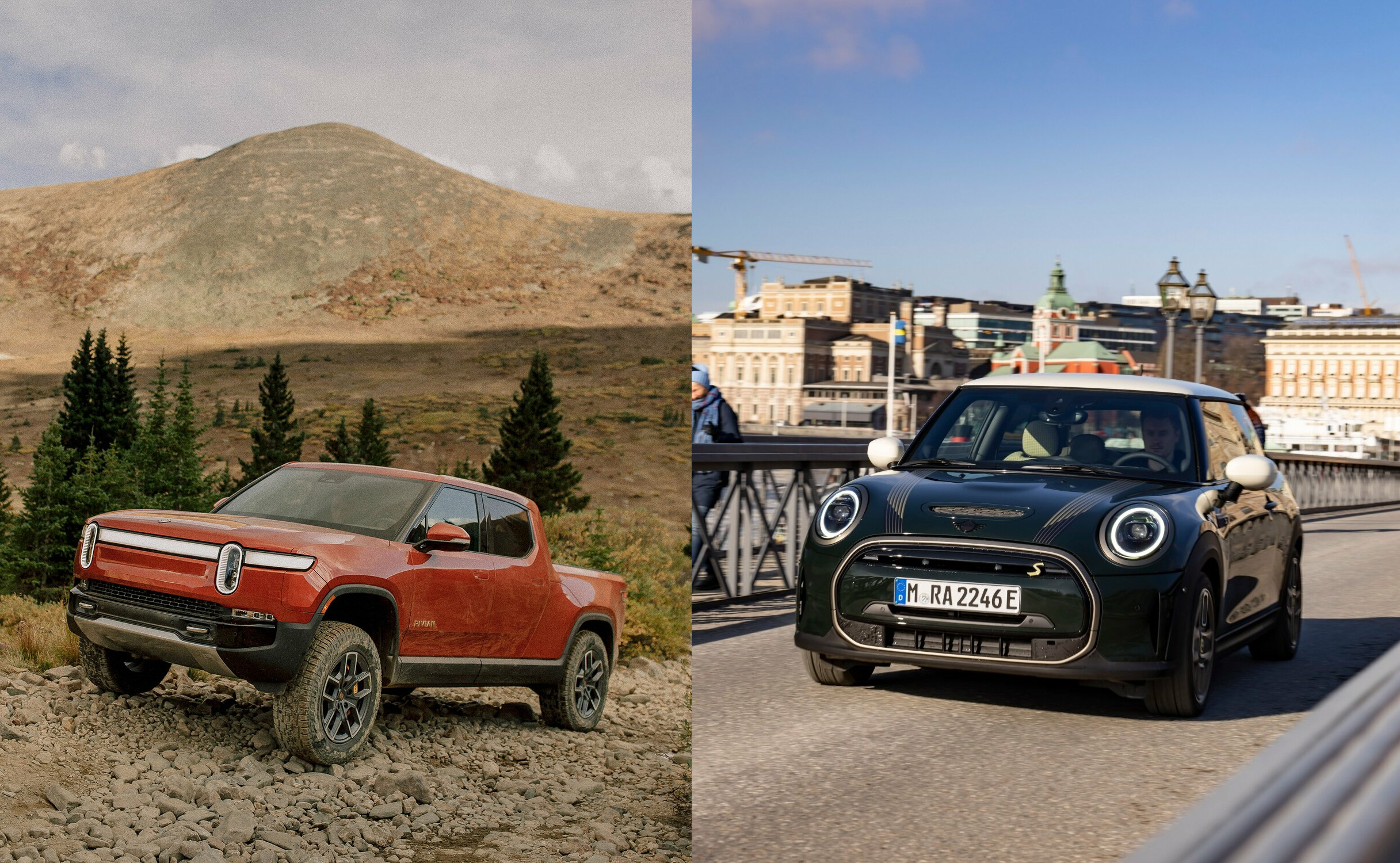
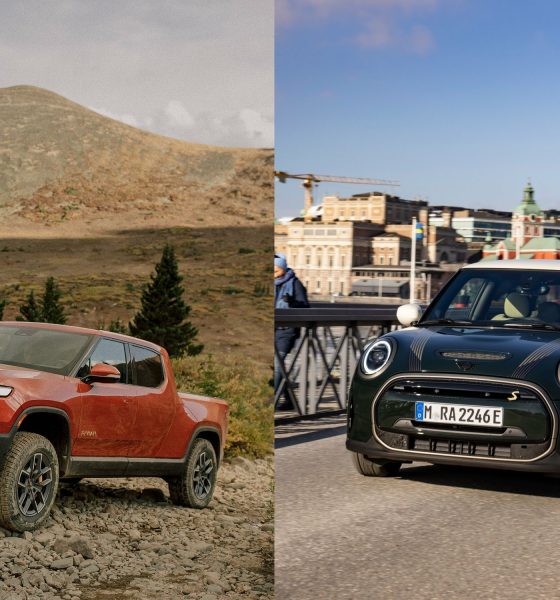
News
Rivian and MINI top EV ownership satisfaction survey from JD Power
The Rivian R1T and the MINI Cooper Electric lead in J.D. Power’s EV ownership satisfaction survey, beating out Tesla, Ford, Hyundai/Kia, and more.
While specifications and professional reviews often play a significant role when a car buyer is looking to buy their next vehicle, the thoughts and experiences of other recent customers can also be a considerable help when picking from an increasingly crowded field of EVs. Today, J.D. Power found that surveyed customers ranked the Rivain R1T and the MINI Cooper Electric as the best new electric vehicles to own.
According to J.D. Power’s survey, which compiles a series of data points from a customer survey into a 0-1,000 point scale, the Rivian R1T was the highest-rated premium electric vehicle, scoring 794 points, while the MINI Cooper Electric led the mass market segment, scoring 782 points.
The Tesla Model 3 came in a close second within the premium segment, scoring 759 points, while the Tesla Model Y followed closely after at 754 points. The segment average score was 756 points. The Audi e-tron and the Polestar 2 rounded out the top five contenders in the premium segment.
As for mass market offerings, the MINI Cooper Electric was another clear winner, with the second-place Kia EV6 trailing by 20 points. The Ford Mustang Mach-E, Hyundai IONIQ 5, and Volkswagen ID.4 rounded out the mass market options.
- Credit: J.D. Power
- Credit: J.D. Power
Previous year’s winners, the Tesla Model 3 and the Kia Niro EV, had dramatically different placements this year, with the Model 3 remaining incredibly competitive for the top spot of the premium segment. At the same time, the Niro EV sank to sixth, just above the industry average.
J.D. Power’s study focused on ten factors when surveying drivers; accuracy of stated battery range, public charging availability, cost of ownership, driving enjoyment, ease of charging at home, interior and exterior styling, safety and technology features, service experience, vehicle quality, and reliability.
Unsurprisingly, premium EV owners had a far better charging experience than mass market EV owners, likely influenced by Tesla’s Supercharging Network. However, it should be noted that a slightly larger proportion of mass-market owners were first-time EV buyers. 84% of all respondents were first-time EV owners, a record for the survey.
Regarding top concerns, results varied considerably between the mass market and premium segments. While infotainment was the biggest annoyance for mass-market EV owners, general build quality and “creaks and rattles” were top concerns in the premium segment.
As EVs become increasingly more popular with the general public, there is no doubt that the problems found today will receive more and more attention, pushing automakers to improve in these critical areas. This, combined with the fantastic ownership experience already cited by the vast majority of owners in this survey, will make EV ownership experience of the future an incredible one.
What do you think of the article? Do you have any comments, questions, or concerns? Shoot me an email at william@teslarati.com. You can also reach me on Twitter @WilliamWritin. If you have news tips, email us at tips@teslarati.com!

News
Tesla Cybercab tests are going on overdrive with production-ready units
Tesla is ramping its real-world tests of the Cybercab, with multiple sightings of the vehicle being reported across social media this week.
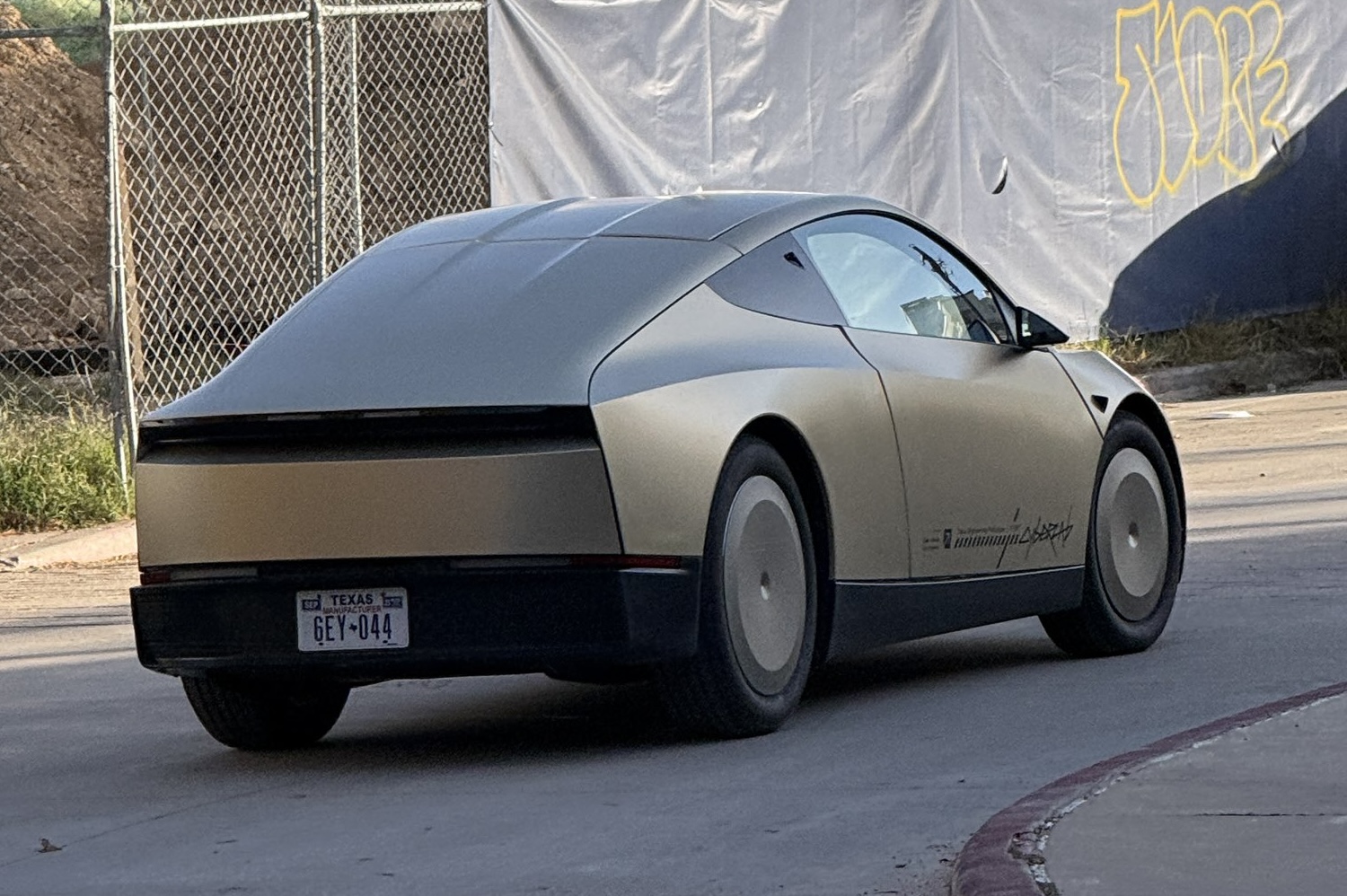
Tesla is ramping its real-world tests of the Cybercab, with multiple sightings of the autonomous two-seater being reported across social media this week. Based on videos of the vehicle that have been shared online, it appears that Cybercab tests are underway across multiple states.
Recent Cybercab sightings
Reports of Cybercab tests have ramped this week, with a vehicle that looked like a production-ready prototype being spotted at Apple’s Visitor Center in California. The vehicle in this sighting was interesting as it was equipped with a steering wheel. The vehicle also featured some changes to the design of its brake lights.
The Cybercab was also filmed testing at the Fremont factory’s test track, which also seemed to involve a vehicle that looked production-ready. This also seemed to be the case for a Cybercab that was spotted in Austin, Texas, which happened to be undergoing real-world tests. Overall, these sightings suggest that Cybercab testing is fully underway, and the vehicle is really moving towards production.
Production design all but finalized?
Recently, a near-production-ready Cybercab was showcased at Tesla’s Santana Row showroom in San Jose. The vehicle was equipped with frameless windows, dual windshield wipers, powered butterfly door struts, an extended front splitter, an updated lightbar, new wheel covers, and a license plate bracket. Interior updates include redesigned dash/door panels, refined seats with center cupholders, updated carpet, and what appeared to be improved legroom.
There seems to be a pretty good chance that the Cybercab’s design has been all but finalized, at least considering Elon Musk’s comments at the 2025 Annual Shareholder Meeting. During the event, Musk confirmed that the vehicle will enter production around April 2026, and its production targets will be quite ambitious.
News
Tesla gets a win in Sweden as union withdraws potentially “illegal” blockade
As per recent reports, the Vision union’s planned anti-Tesla action might have been illegal.
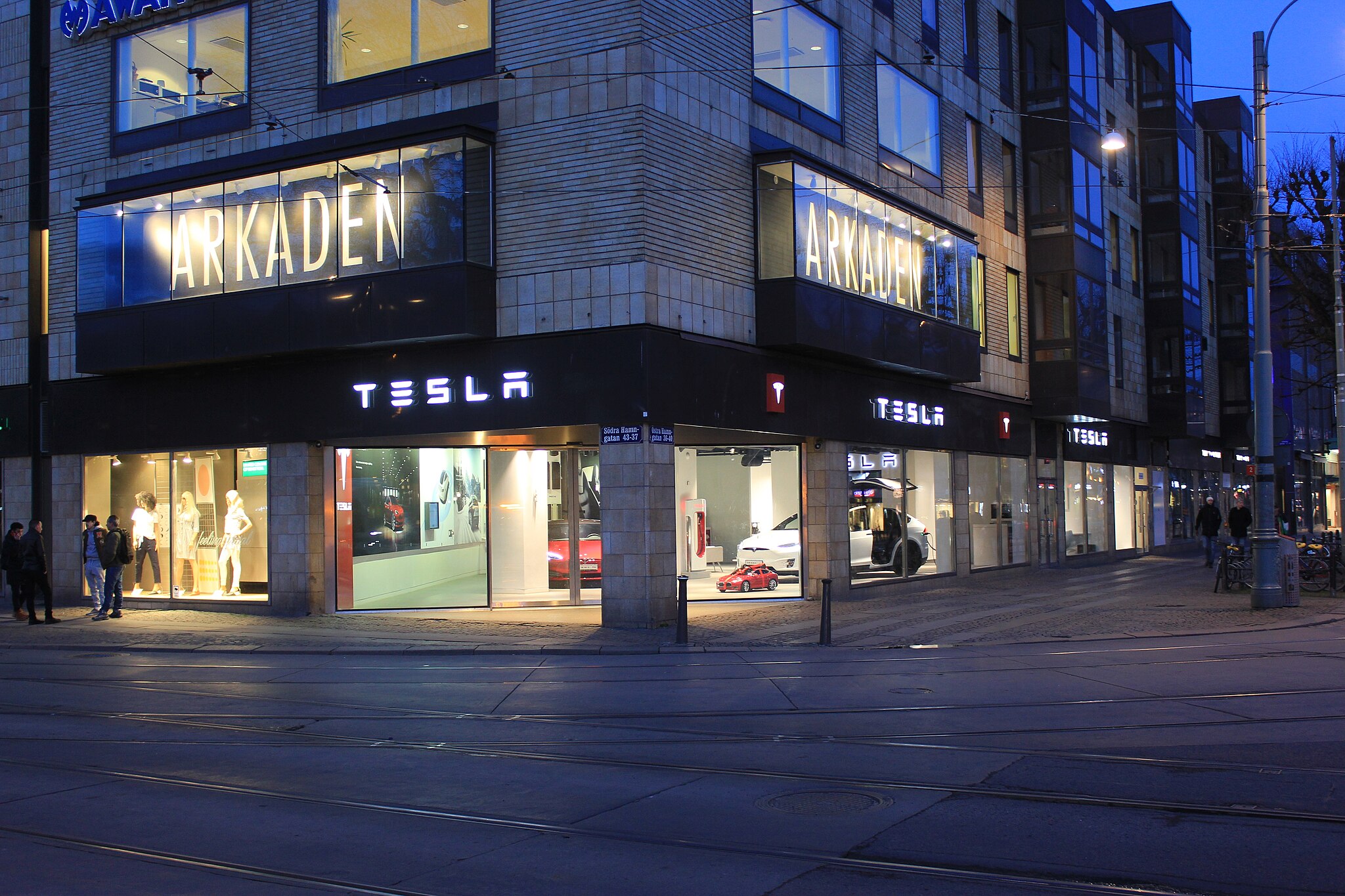
Swedish union Vision has withdrawn its sympathy blockade against Tesla’s planned service center and showroom in Kalmar. As per recent reports, the Vision union’s planned anti-Tesla action might have been illegal.
Vision’s decision to pull the blockade
Vision announced the blockade in early December, stating that it was targeting the administrative handling of Tesla’s facility permits in Kalmar municipality. The sympathy measure was expected to start Monday, but was formally withdrawn via documents sent to the Mediation Institute and Kalmar Municipality last week.
As noted in a Daggers Arbete report, plans for the strike were ultimately pulled after employer group SKR highlighted potential illegality under the Public Employment Act. Vision stressed its continued backing for the Swedish labor model, though Deputy negotiation manager Oskar Pettersson explained that the Vision union and IF Metall made the decision to cancel the planned strike together.
“We will not continue to challenge the regulations,” Petterson said. “The objection was of a technical nature. We made the assessment together with IF Metall that we were not in a position to challenge the legal assessment of whether we could take this particular action against Tesla. Therefore, we chose to revoke the notice itself.”
The SKR’s warning
Petterson also stated that SKR’s technical objection to the Vision union’s planned anti-Tesla strike framed the protest as an unauthorized act. “It was a legal assessment of the situation. Both for us and for IF Metall, it is important to be clear that we stand for the Swedish model. But we should not continue to challenge the regulations and risk getting judgments that lead nowhere in the application of the regulations,” he said.
Vision ultimately canceled its planned blockade against Tesla on December 9. With Vision’s withdrawal, few obstacles remain for Tesla’s long-planned Kalmar site. A foreign electrical firm completed work this fall, and Tesla’s Careers page currently lists a full-time service manager position based there, signaling an imminent opening.
News
Tesla Semi program Director teases major improvements
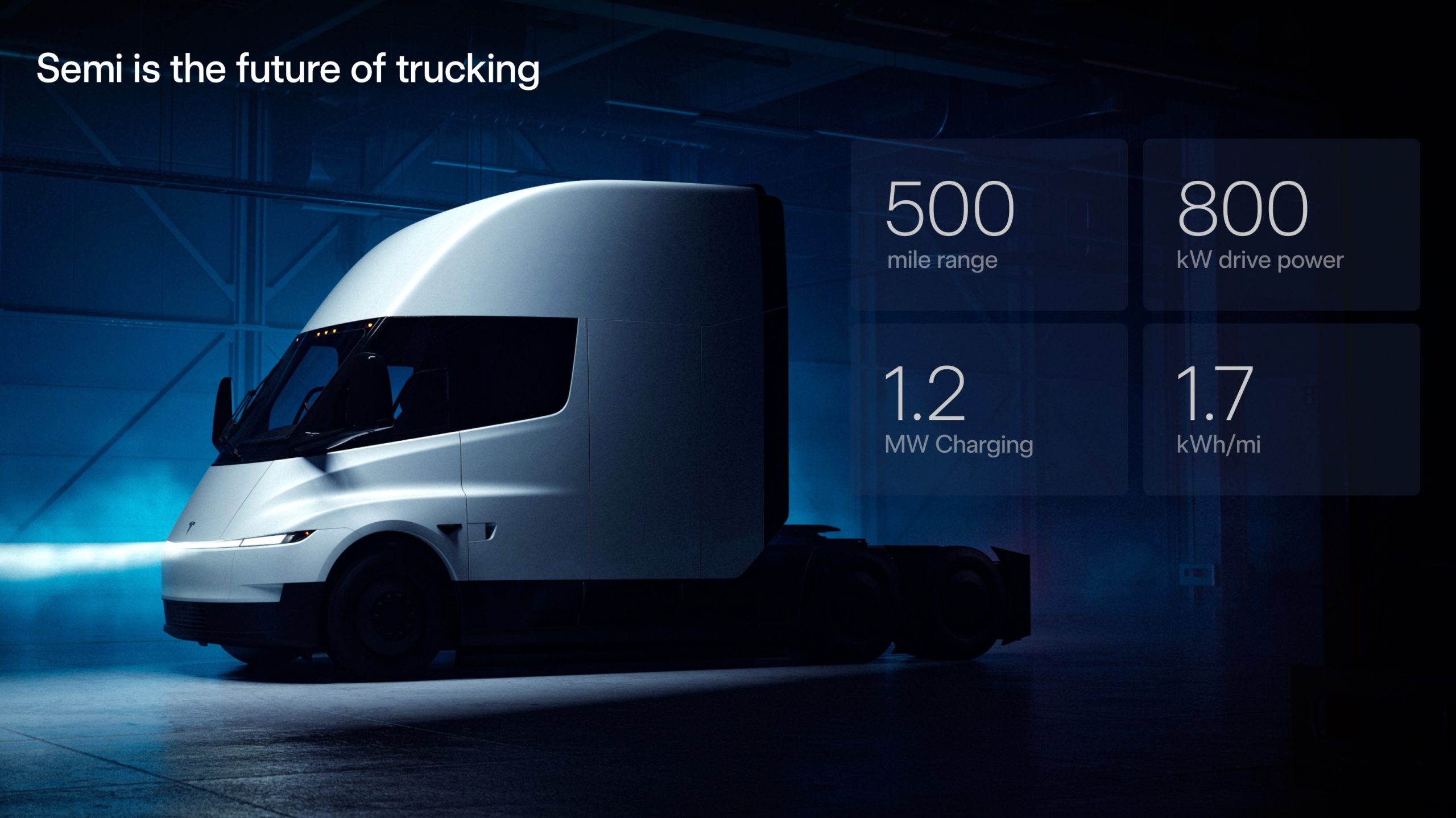
Tesla Semi Program Director Dan Priestly teased the major improvements to the all-electric Class 8 truck on Thursday night, following the company’s decision to overhaul the design earlier this year.
Priestley said he drove the Semi on Thursday, and the improvements appear to be welcomed by one of the minds behind the project. “Our customers are going to love it,” he concluded.
Just drove the redesigned Semi. Our customers are going to love it. https://t.co/KZ88sf1CDL
— Dan Priestley (@danWpriestley) December 19, 2025
The small detail does not seem like much, but it is coming from someone who has been involved in the development of the truck from A to Z. Priestley has been involved in the Semi program since November 2015 and has slowly worked his way through the ranks, and currently stands as the Director of the program.
Tesla Semi undergoes major redesign as dedicated factory preps for deliveries
Tesla made some major changes to the Semi design as it announced at the 2025 Annual Shareholder Meeting that it changed the look and design to welcome improvements in efficiency.
Initially, Tesla adopted the blade-like light bar for the Semi, similar to the one that is present on the Model Y Premium and the Cybertruck.
Additionally, there are some slight aesthetic changes to help with efficiency, including a redesigned bumper with improved aero channels, a smaller wraparound windshield, and a smoother roofline for better aero performance.
All of these changes came as the company’s Semi Factory, which is located on Gigafactory Nevada’s property, was finishing up construction in preparation for initial production phases, as Tesla is planning to ramp up manufacturing next year. CEO Elon Musk has said the Semi has attracted “ridiculous demand.”
The Semi has already gathered many large companies that have signed up to buy units, including Frito-Lay and PepsiCo., which have been helping Tesla test the vehicle in a pilot program to test range, efficiency, and other important metrics that will be a major selling point.
Tesla will be the Semi’s first user, though, and the truck will help solve some of the company’s logistics needs in the coming years.
